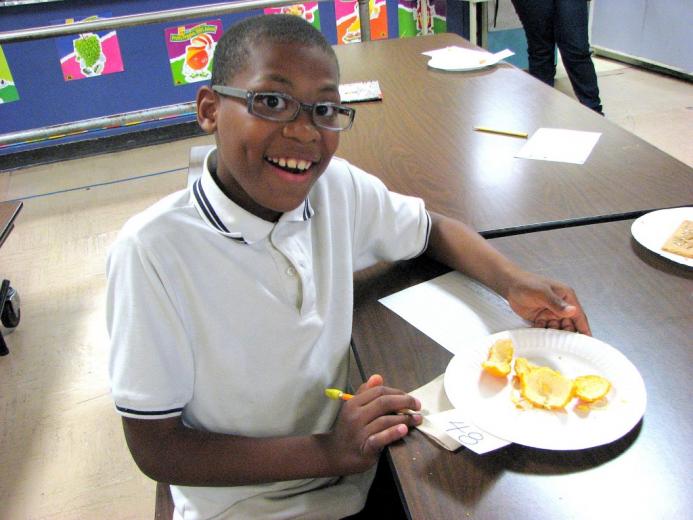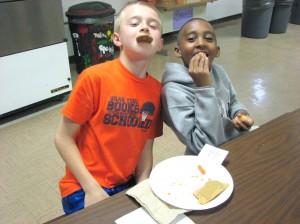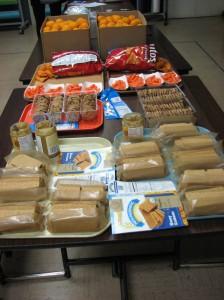Kids Make ‘Red Light, Green Light’ Snacks
Wednesday marked our three-month anniversary working with the 100 K-5th grade students at Capitol Heights Academy. In the past three months, we have taught them facts on nutrition, different fruits and vegetables, organic and conventional farming, and more. California Food Literacy Center prides itself on measuring results. While the smiles on kids’ faces tell us a lot, we also want concrete data to show how well our program is working. On Wednesday, we conducted an evaluation to gain a better understanding of what they have remembered and how we can improve their educational experience with us.
After taking a written self-assessment, we conducted a cutting-edge hands-on evaluation, in which the children were excited to partake. We lined a long table with various snacks for the kids to create their own plates. The choices ranged from “red light foods” such as Doritos and cookies, to “green light foods” such as tangerines, organic graham crackers, nut butter spread, and baby carrots. Reading nutrition labels and understanding “red light” versus “green light” foods was one of the critical lessons we repeated throughout the three-month class.
The kids were given numbered plates and asked to fill them with the snacks. We then took “before” photos of the full plates, and an “after” shot of the same plates after the kids had eaten. We will analyze the data to compare the plates to determine what the children filled their plates with and if they actually eat the food items they took. It is a practical way to see if the nutrition knowledge they have gotten over the past three months have translated to a change in their eating habits.
We will evaluate the plates and the self-assessments and write a follow up article with the results.
Thanks to our volunteers, Cynthia and Granger Elliot, Sarah Langford, and Ashely Sarris for their hard work helping everything run smoothly! We would also like to thank Attune Foods for their generous donation of graham crackers.
On the same day we led the evaluation with the kids at Capitol Heights Academy, we led a nutrition class with recently emancipated foster youth from La Verne Adolfo Housing Program through the Junior League. By comparing fast food to home cooked meals, we taught them nutrition information such as what trans fat is and the various types of carbohydrates.
To demonstrate how easy it is to make a burrito at home, we brought tortillas, canned beans, cheese and salsa. The youth got to make their own burritos. They also left with a handout with nutrition information on a fast food burrito versus a homemade burrito, a breakdown of prices, and an easy bean burrito recipe.
Article by Heather Teoh
Edited by Amber Stott




